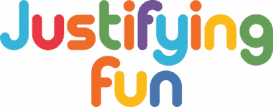
We’ve all been there—your child’s school bag is technically full, but when it comes to actually learning at home, everything suddenly vanishes. The pencils are somewhere. The notebooks are half-used. And the actual learning? That’s hiding behind a YouTube tab. But adding a few well-placed teaching aids into their regular school supplies? That’s a parenting move with real staying power.
Teaching aids don’t have to be complicated or Pinterest-perfect. They can be playful, practical, and even fun to use during homework time or car rides. Whether your child is just learning their ABCs or is already diving into sentence-building and sums, these small additions can make a surprisingly big impact.
Here’s how to sneak a little learning into their backpack—without making it feel like extra work.
Turn Stationery Into Simple Teaching Learning Material
Click image to view the Product on Amazon
Let’s start with the basics. You can turn everyday school items—like folders, pencil cases, and notebooks—into low-key English teaching aids with just a few tweaks. For example, write a “word of the week” on a sticky note and pop it on the front of their notebook. Add vowels decoration ideas like colour-coded sticky tabs for A-E-I-O-U to help them remember sounds and spellings.
You can also get crafty with TLM ideas (Teaching Learning Material) by turning their folder dividers into themed learning zones: one for new nouns, one for tricky verbs, and one for sentence starters. Younger kids might enjoy having mini flashcards tucked into their pencil case—each one showing a simple shape, colour, or word. And yes, these can double up as boredom-busters during waiting time at the dentist.
Even their eraser or ruler can become part of learning—try writing a tiny “math challenge” on the back with a wipeable pen. It’s subtle, but it keeps learning close at hand, even when they don’t realise it.
Include Teaching Aids For Maths (Without the Tears)
Click image to view the Product on Amazon
Maths can feel like the enemy after a long day at school. But a few easy math activities slipped into their regular supplies can help turn those tricky numbers into something less intimidating.
If your child is in primary school, include a laminated number grid (1 to 100), some dot stickers, or even small cut-outs for “number of the day” games. You can stick a tiny zip pouch to the inside of their folder to hold coins or counters for quick addition/subtraction practice at home. Want to go super simple? Include a dry-erase marker and let them write mini sums on the back of their folder.
Older kids might benefit from a visual formula chart or a few mnemonic flashcards tucked into their maths book. If you want to add a fun twist, you could print simple puzzles or games weekly and sneak them into their planner.
You don’t need a classroom to use teaching aids for maths—just a little consistency and creativity.
Incorporate English Teaching Aids That Feel Like Play
Click image to view the Product on Amazon
Learning doesn’t always have to be serious. You can make English teaching aids ideas feel playful and natural—especially if your child is in kindergarten or early primary.
Try including illustrated word cards for common nouns or emotions in their backpack. You can print these from websites like the Noun Project, or draw simple stick figures if you’re feeling brave. Choose themes they already love—animals, food, toys—and rotate them weekly. They’ll start using new words without even trying.
For early readers, stick a mini alphabet chart or vowel display inside their homework folder. If your child loves decorating, let them choose their own “vowel theme” using coloured paper, stickers, or simple drawings. These vowels decoration ideas don’t just look cute—they reinforce letter sounds every time they open their bag.
You can also make DIY bookmarks with weekly phonics rules or tricky spelling words. It’s fun, it feels crafty, and it turns reading time into a gentle learning moment.
Final Thoughts
Adding teaching aids into your child’s school supplies doesn’t mean turning your home into a classroom. It just means creating little pockets of learning—wherever they are. Whether it’s a flashcard tucked into a pencil pouch or a maths puzzle hiding behind a folder tab, these moments build curiosity and confidence.
And hey, if it means fewer fights over homework and more “Oh, I remember this!” moments? That’s a win in my book.



